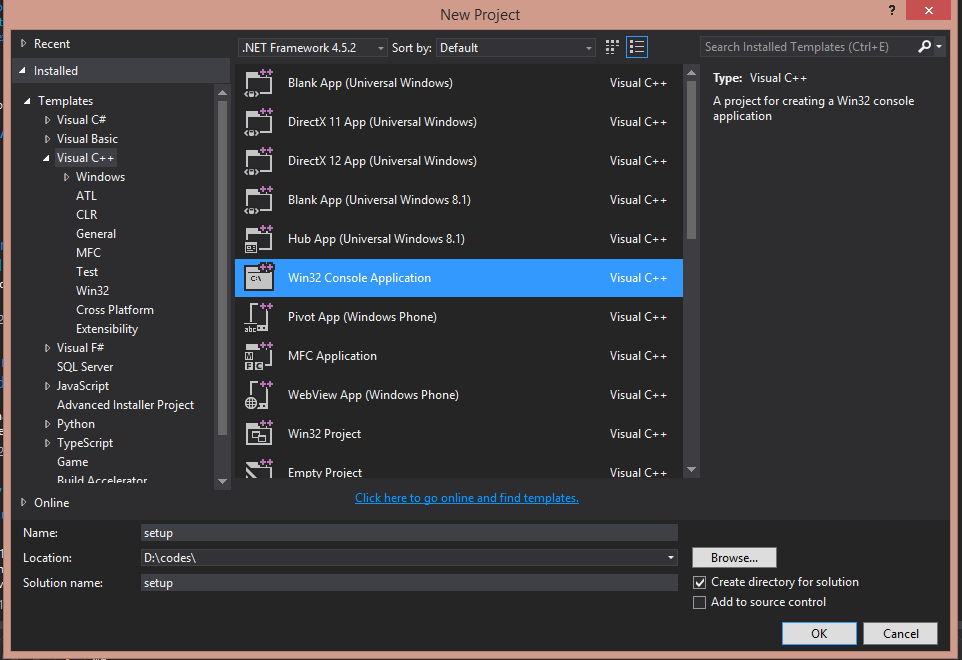This tutorial explains how to access global input devices: keyboard, mouse and joysticks. This must not be confused with events. Real-time input allows you to query the global state of keyboard, mouse and joysticks at any time ('is this button currently pressed?', 'where is the mouse currently?') while events notify you when something happens ('this button was pressed', 'the mouse has moved').
- How To Set Up Sfml In Dev C Pdf
- How To Set Up Sfml In Dev C File
- How To Add Sfml To Dev C++
- How To Set Up Sfml In Dev C 4
The class that provides access to the keyboard state is sf::Keyboard. It only contains one function, isKeyPressed, which checks the current state of a key (pressed or released). It is a static function, so you don't need to instantiate sf::Keyboard to use it.
Setting up Visual Studio and SFML development environment This is the very first project on the road to building games for desktop operating systems like Windows, Linux and Mac. In these really simple steps we will walk through the process of installing the software applications that we need to start to learn to code for these desktop OS’s.
This function directly reads the keyboard state, ignoring the focus state of your window. This means that isKeyPressed may return true even if your window is inactive.
Key codes are defined in the sf::Keyboard::Key enum.
Depending on your operating system and keyboard layout, some key codes might be missing or interpreted incorrectly. This is something that will be improved in a future version of SFML.
The class that provides access to the mouse state is sf::Mouse. Like its friend sf::Keyboard, sf::Mouse only contains static functions and is not meant to be instantiated (SFML only handles a single mouse for the time being).
You can check if buttons are pressed:
Mouse button codes are defined in the sf::Mouse::Button enum. SFML supports up to 5 buttons: left, right, middle (wheel), and two additional buttons whatever they may be.
You can also get and set the current position of the mouse, either relative to the desktop or to a window:
There is no function for reading the current state of the mouse wheel. Since the wheel can only be moved relatively, it has no absolute state that can be queried. By looking at a key you can tell whether it's pressed or released. By looking at the mouse cursor you can tell where it is located on the screen. However, looking at the mouse wheel doesn't tell you which 'tick' it is on. You can only be notified when it moves (MouseWheelScrolled event).
The class that provides access to the joysticks' states is sf::Joystick. Like the other classes in this tutorial, it only contains static functions.
Joysticks are identified by their index (0 to 7, since SFML supports up to 8 joysticks). Therefore, the first argument of every function of sf::Joystick is the index of the joystick that you want to query.

You can check whether a joystick is connected or not:
How To Set Up Sfml In Dev C Pdf
You can also get the capabilities of a connected joystick:
How To Set Up Sfml In Dev C File
Joystick axes are defined in the sf::Joystick::Axis enum. Since buttons have no special meaning, they are simply numbered from 0 to 31.
Finally, you can query the state of a joystick's axes and buttons as well:
How To Add Sfml To Dev C++
How To Set Up Sfml In Dev C 4
Joystick states are automatically updated when you check for events. If you don't check for events, or need to query a joystick state (for example, checking which joysticks are connected) before starting your game loop, you'll have to manually call the sf::Joystick::update() function yourself to make sure that the joystick states are up to date.